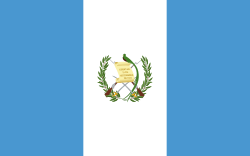Portal:Latin America
 Intro Latin America (Spanish and Portuguese: América Latina; French: Amérique Latine) is the cultural region of the Americas where Romance languages are predominantly spoken, primarily Spanish and Portuguese. Latin America is defined according to cultural identity, not geography, and as such it includes countries in both North and South America. Most countries south of the United States tend to be included: Mexico and the countries of Central America, South America and the Caribbean. Commonly, it refers to Hispanic America plus Brazil. Related terms are the narrower Hispanic America, which exclusively refers to Spanish-speaking nations, and the broader Ibero-America, which includes all Iberic countries in the Americas and occasionally European countries like Spain, Portugal and Andorra. Despite being in the same geographical region, English- and Dutch-speaking countries and territories are excluded (Suriname, Guyana, the Falkland Islands, Jamaica, Trinidad and Tobago, Belize, etc.). The term Latin America was first introduced in 1856 at a Paris conference titled, literally, Initiative of the Americas: Idea for a Federal Congress of the Republics (Iniciativa de la América. Idea de un Congreso Federal de las Repúblicas). Chilean politician Francisco Bilbao coined the term to unify countries with shared cultural and linguistic heritage. It gained further prominence during the 1860s under the rule of Napoleon III, whose government sought to justify France's intervention in the Second Mexican Empire. (Full article...) Entries here consist of Good and Featured articles, which meet a core set of high editorial standards.
A pisco sour is an alcoholic cocktail of Peruvian origin that is traditional to both Peruvian and Chilean cuisine. The drink's name comes from pisco, a brandy which is its base liquor, and the cocktail term sour, implying sour citrus juice and sweetener components. The Peruvian pisco sour uses Peruvian pisco and adds freshly squeezed lime juice, simple syrup, ice, egg white, and Angostura bitters. The Chilean version is similar, but uses Chilean pisco and Pica lime, and excludes the bitters and egg white. Other variants of the cocktail include those created with fruits like pineapple or plants such as coca leaves. Although the preparation of pisco-based mixed beverages possibly dates back to the 1700s, historians and drink experts agree that the cocktail as it is known today was invented in the early 1920s in Lima, the capital of Peru, by the American bartender Victor Vaughen Morris. Morris left the United States in 1903 to work in Cerro de Pasco, a city in central Peru. In 1916, he opened Morris' Bar in Lima, and his saloon quickly became a popular spot for the Peruvian upper class and English-speaking foreigners. The oldest known mentions of the pisco sour are found in newspaper and magazine advertisements, dating to the early 1920s, for Morris and his bar published in Peru and Chile. The pisco sour underwent several changes until Mario Bruiget, a Peruvian bartender working at Morris' Bar, created the modern Peruvian recipe for the cocktail in the latter part of the 1920s by adding Angostura bitters and egg whites to the mix. (Full article...) TopicsMore did you know -
WikiProjects
Selected article - Guatemala, officially the Republic of Guatemala, is a country in Central America. It is bordered to the north and west by Mexico, to the northeast by Belize, to the east by Honduras, and to the southeast by El Salvador. It is bounded by the Pacific Ocean to the south and the Gulf of Honduras to the northeast.
Did you know (auto-generated)
General imagesThe following are images from various Latin America-related articles on Wikipedia.
Selected panorama
Panorama of La Paz, the capital and second largest city in population (after Santa Cruz de la Sierra) of Bolivia. The city hosts numerous local festivities, and is an important cultural center of Bolivia. Selected pictureMoai are monolithic human figures carved by the Rapa Nui people on Easter Island in eastern Polynesia between the years 1250 and 1500 CE.Nearly half are still at Rano Raraku, the main moai quarry, but hundreds were transported from there and set on stone platforms called ahu around the island's perimeter. Almost all moai have overly large heads three-eighths the size of the whole statue. The moai are chiefly the living faces (aringa ora) of deified ancestors (aringa ora ata tepuna).The statues still gazed inland across their clan lands when Europeans first visited the island, but most were cast down during later conflicts between clans.
CountriesTerritories (in bold), dependencies, and subnational entities of a country not located primarily in Latin America are italicized.
Related portalsNorth and Central America Caribbean South America Associated WikimediaMore portals |




































